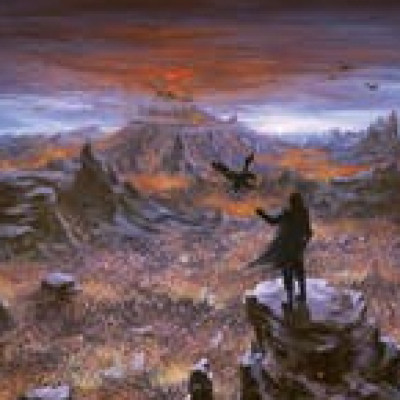I've always been enthralled with deeper exploration of themes and story. But I'd never given thought to the art and story a TCG might be putting into the world because, prior to this, I'd only played games for stories already told - licensed properties like Star Wars, Marvel, and Dragonball Z. FAB with Freyja was instrumental in changing my perspective; Ada Korman was producing FAB content that spoke to my academic side, evaluating the art of the game, identifying the themes it was communicating, and regularly challenging LSS to aim higher. For me, it was exhilarating.
Today, thoughtful intellectual explorations of theme and story are being done by content creators like Dylan Davis of Gorganian Tome, Sam George of FAB Balanced Gaming, and Kale Brenzi of DeadSummer Art. Still, I feel this is a tragically under-explored aspect of the game, and deserves more attention from content creators. It is, understandably, a lot of work to produce quality intellectual content, but it's incredibly rewarding work and makes for evergreen material. So today, I’m going to make my contribution to be the change I’d like to see.
Heroes are the central focus of Flesh and Blood, and lately LSS has been leaning into this by previewing a set’s heroes early in spoiler season. When Nuu was revealed as one of Part the Mistveil’s heroes, it spurred a lot of conversation about how we were getting ‘the sexy set’. Nuu’s overt sensuality is certainly breaking new ground for FAB, which has largely avoided exploring the sexual side of its chief characters. This drove me to examine what, exactly, the purpose of a hero’s art is, and what it will take for Nuu to successfully fulfill that purpose.
The Hero's Role
Flesh and Blood is a hero-based game - which is to say, building your deck begins by choosing one card (a hero) who will determine what your deck is trying to do and how it will do it. In that regard, heroes are the most impactful and most important cards LSS prints. They are tentpoles around which the entire game is built. For LSS, there's a lot riding on them - and if you think the look and design of Bravo, Showstopper is merely a cosmetic afterthought or a bit of flavor art, you're selling the role of art and story well short.

Heroes are the most impactful and most important cards LSS prints... they are tentpoles around which the entire game is built.
In one of my favorite pieces of 2023, Dylan Davis aptly compared Flesh and Blood to a Fighting Game; most relevant here, he pointed to how both inspire a deep sense of player identity tied to hero selection.
“This extended idea of player and player-character is actually quite rare in other card games. Sure, in Magic we have Reid Duke known as the Jund player, but the archetype of deck does not carry the same weight. Being a “midrange” player does not carry that sense of personality like in FAB. I often feel like I can walk in a room and tell who each person plays based on how they dress, or their mannerisms.” -Dylan Davis
So how do people find their hero? I think this analysis of the role of character design in fighting games by silvershire fits FAB well.
Silvershire points out that, when a player starts up with a fighting game, they often have nothing more than the character's visual design to inform their choice. Elements like a character's outfit and their body's proportions can suggest a character's fighting style (such as Chun Li's famous legs suggesting her focus on kicks); even their idle movements can hint toward what they aim to do.
Most new players begin their FAB journeys by choosing a hero; and for many of them, that choice is going to be based on the hero they’re drawn to. As such, a hero’s art needs to communicate clearly what that deck is all about without relying on the player to actually know that they’re interpreting that information - and ideally, reach the right player before they even know what they're doing. If we assume a player is completely new to TCGs when picking up their first Blitz deck, the art needs to do the heavy lifting of directing strategies into the hands of the right players.
Most new players begin their FAB journeys by choosing a hero; as such, a hero's art needs to communicate clearly what that deck is all about - and ideally, reach the right player before they even know what they're doing.
This goes well beyond 'Bravo swings his big hammer' and gets into personality, tone, and mood. Moreover, it gets at expectations. Let's look at one of the originals: Dorinthea.
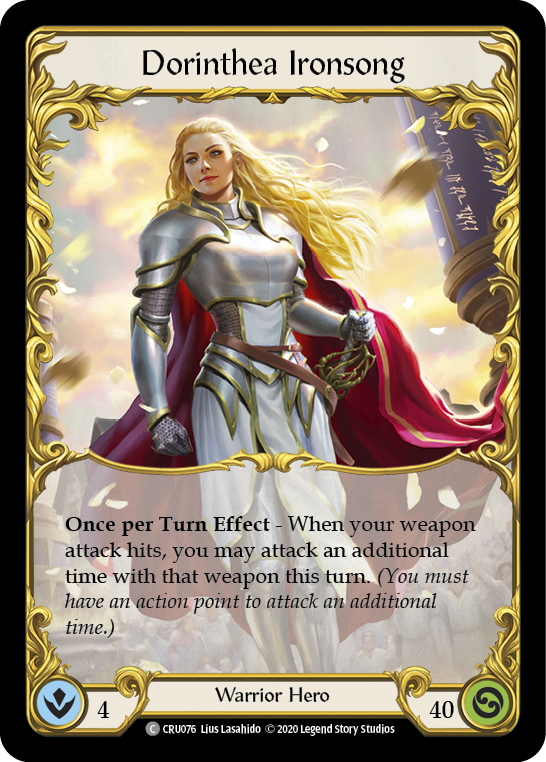
Dorinthea is an armored knight, a Warrior by class definition, and this implies a certain degree of discipline and rules-following. She carries a rapier - a fencing-style sword that emphasizes technique over strength - and notably it isn't drawn but sheathed at her side. Her youthful appearance and golden hair match the bright sky and embellished border design, and her cape denotes a nobility to her. The tone of the card could roughly be described as 'good', 'optimistic', and 'confident'. Dorinthea's build correctly informs the player that this hero will not be throwing the big attacks, as she doesn't have the sheer size advantage of Bravo or Rhinar.
When you play Dorinthea, your gameplan revolves around that sword. You put forth an attack, relatively confident that you can get it to hit with your attack reactions. The payoff for a well-planned turn is a continuation of that turn; you're rewarded for properly executing the trained routine. From the perspective of the pilot, Dorinthea is a stable deck with repeated play patterns and predictable outcomes; and while your reactions could be seen as 'unpredictable', the fact that every attack starts with a sword swing for 3 counteracts what could otherwise be considered 'tricky' play.
In other words, Dorinthea plays like she appears. And the odds are pretty good that, if you pick up Dorinthea knowing nothing else about the deck than that 'this looks like my kind of character', you'll come away feeling like you got what you signed up for.
When I picked up Welcome to Rathe, I started with Dorinthea because her character design appealed to me - and to this day, Warrior is the only WTR class that resonates strongly with the kind of player I am. In my experience, the art did its job.
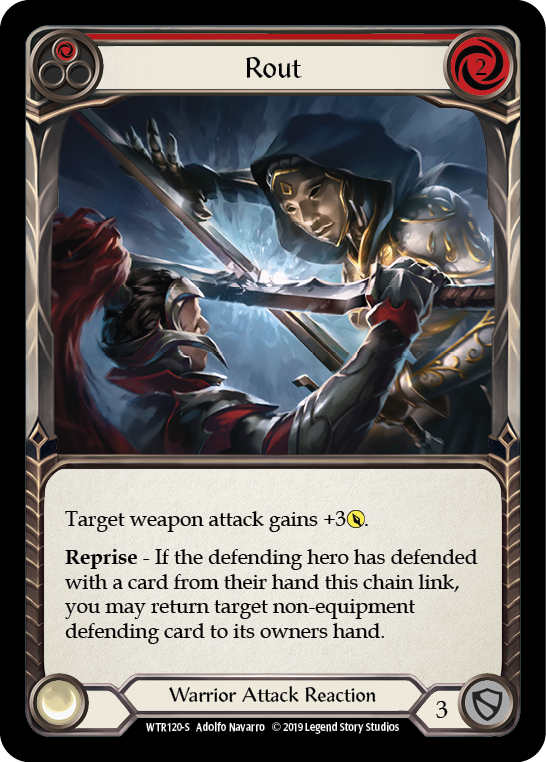
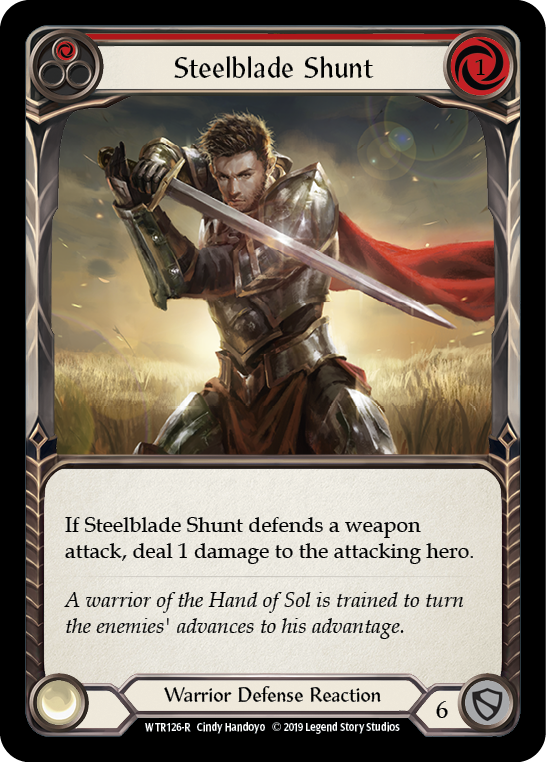
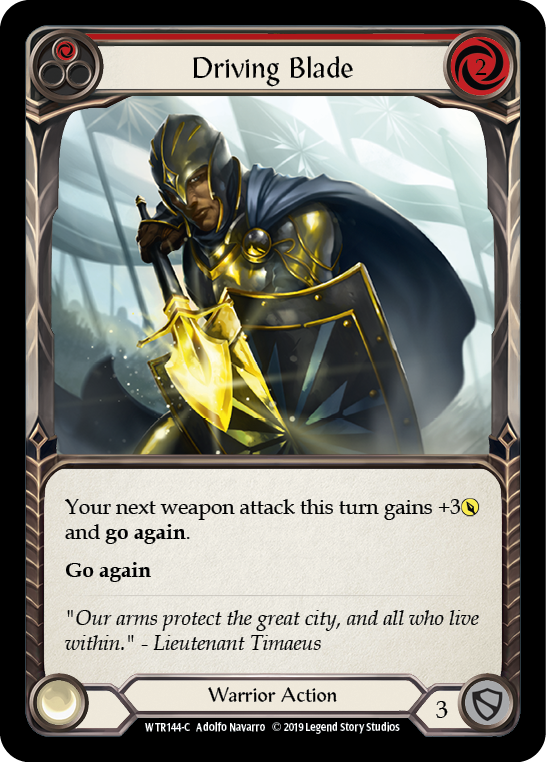
The importance of hero art and design is magnitudes more than the importance of art on any other card, where the requirement is essentially "exist within the tone of this class". Across the larger card pool, we're much more likely to find art that simply looks cool - and honestly, I don't want to spend a whole lot of time on the card pool at large. Flesh and Blood speaks through its heroes, and as players we're encouraged to connect to it through them. Which makes their decisions on how to present heroes - and how not to - incredibly interesting to examine.
Character - and Gameplay - First
The world of Rathe borrows from the fictional settings of many established genres. But LSS also apply their own lens to the camera to capture the world they want for this game. One choice they've made - and reaffirmed several times along the way - is not to lead with sex appeal unless it's inherently tied to the character.
You may have noticed that Dorinthea defies the fantasy trope of the chainmail bikini. Yes, her armor is formed to fit a female body - but she's also fully armored. This shouldn’t feel refreshingly novel, but that’s the field we’re living in.
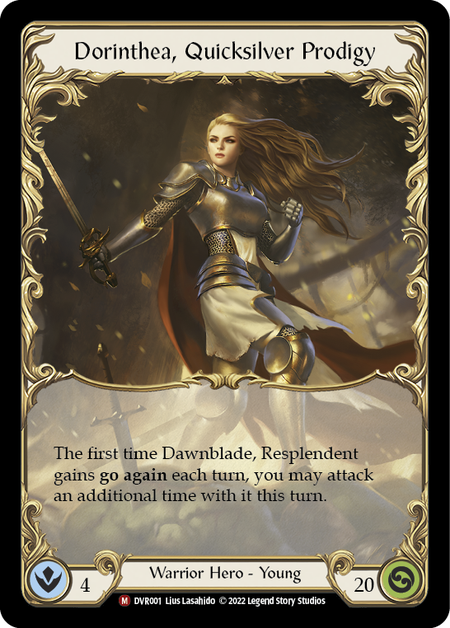
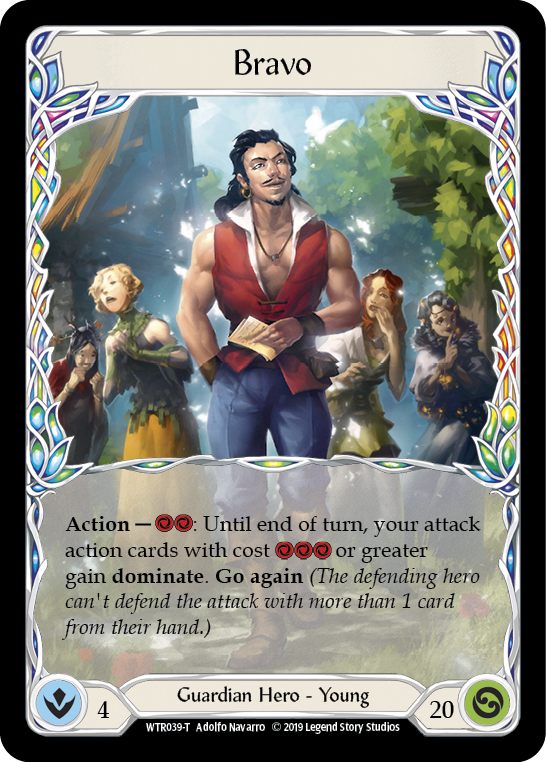
In contrast, Bravo is decidedly sexualized - and that's the point. For proof of this, check out the swagger on young Hamilton as he turns heads strolling through town. Why is this relevant to Bravo as a hero in this game? Because mechanically, Bravo is a hero who can stand by and watch others work for their wins while his just come to him. His natural charisma and strong, capable body let you know that the Guardian deck he fronts is fine to sit back and watch what happens. Bravo looks content to flex and showboat, to make light of the situation for the benefit of the crowd - and when he’s built anticipation, he lets loose with a big, flashy attack, commanding attention. Victor gets the same point across through his arrogance; Oldhim with his age and elemental sturdiness; and Betsy with her huge presence.
Contrast Bravo with Rhinar - because it's pretty easy to compare Brutes and Guardians, but their cards (and their heroes) are not interchangeable. Rhinar (and Kayo) do not look unassailable. Their wins are not inevitable. When you look at Rhinar, you don't get the impression that you can wait out the opponent's assault and watch the tide turn in your favor. You expect you'll have to play aggressively, and that your aggression should scare them; this will be a game of gaining ground and overwhelming the opposition.
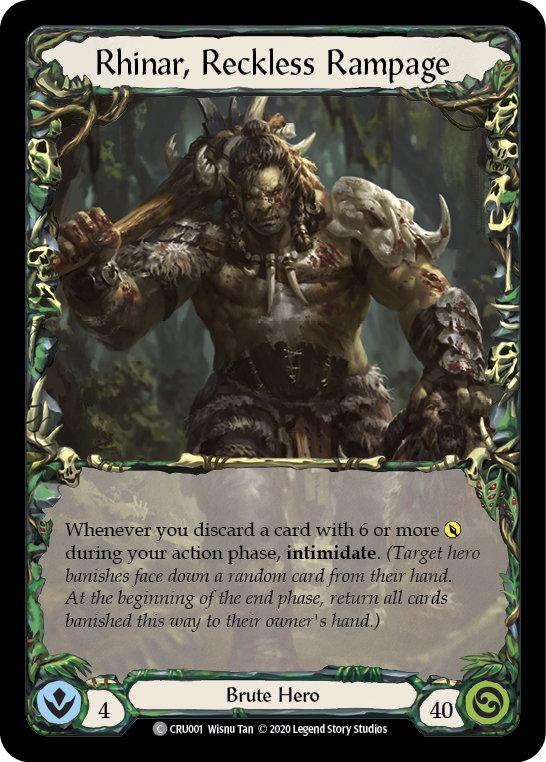
So in Bravo's case, sex appeal is both a character trait and a tool to reaffirm the gameplay you can expect from the class. But as demonstrated across several other Guardians, there are other ways of giving that same impression without relying on sex appeal. In fact, prior to Nuu, LSS really hasn’t been using sex appeal as gameplay shorthand for any other hero. There are characters who are sexy, no doubt - but there aren't characters who are sexualized - the distinction here being ‘sexuality is a major theme of this piece of art’.
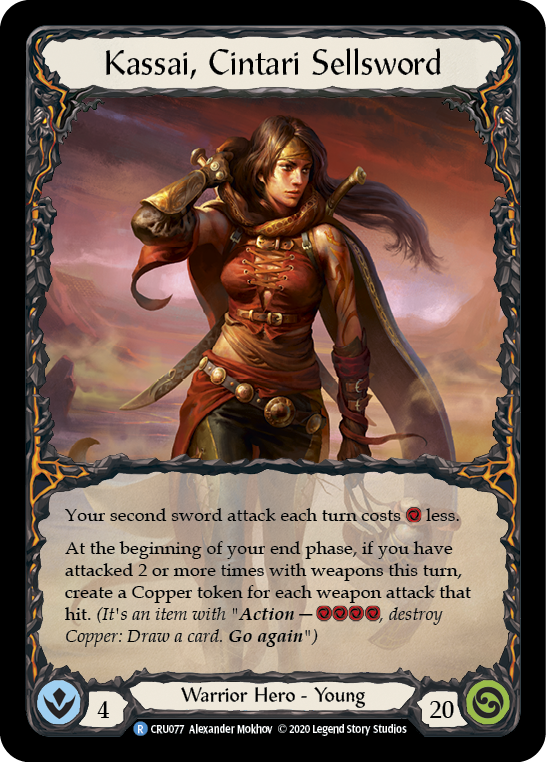
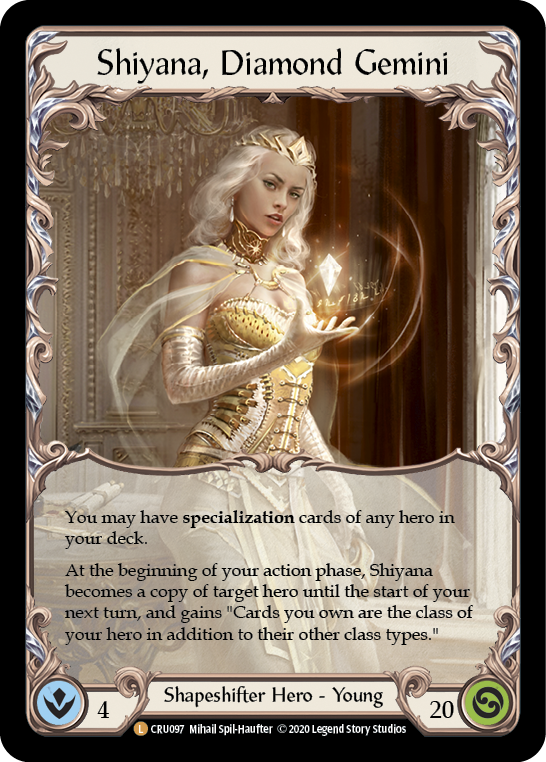
(Presented for your consideration: two characters designed to appear attractive - but are they being reduced in any way by that?)
The sweeping statement above may not land with you, and you wouldn’t be alone. When I discussed this draft with my wife, she called out Kassai of the Golden Sands as overtly sexualized - and so did Dylan Davis! There's also a conversation to be had about Prism, Advent of Thrones, who seems to approach the line of canon-breaking fan service; maybe she'll abandon her scholarly aesthetic and find her way to the throne as the story continues - and of course with Illusionists, things are not always as they appear - but for now it seems to be more of an indulgence in waifu culture.
It isn’t necessarily a problem to have sexy characters in a game; but it becomes problematic when the character gets lost to sexual objectification. If LSS were to make a mistake like that on a hero, they’d risk one of their strongest hooks.
Is Nuu Really Any Different?
LSS seems to be intentionally archetypical in their character design, leaving plenty of room for you to embody the hero yourself. Dylan Davis did an amazing video on the Living Legend system and 2nd person storytelling, which essentially says that the player takes an active role in writing the story of the heroes in FAB. If their goal is to develop a symbiosis and fusion of the player and the hero, they need their art to convey character so that they don’t have to rely on story to create that attachment. The more they define their characters, the more they risk creating a narrow fit for players.
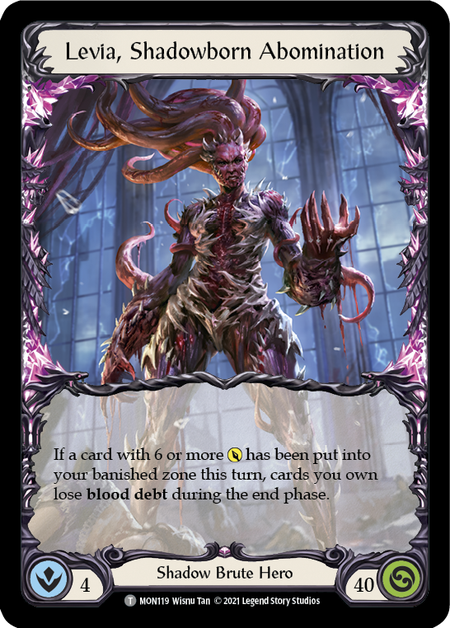
Consider, for example, Levia (and the Shadow card pool in general). Levia is a monstrous character, and her artwork conveys this overtly. She is the gateway through which you must pass before reaching the blood, gore, and body horror that defines Shadow Brute artwork. Perhaps by design, she is an off-putting hero with a narrow demographic - and that may contribute to her play rates and reception, even when her performance has been impressive. It’s interesting that Levia has also been bookended by more sympathetic portrayals: a young hero card that paints her a victim of powers beyond her control, and a transformative demi-hero where she comes out the victor in her struggle with dark forces.
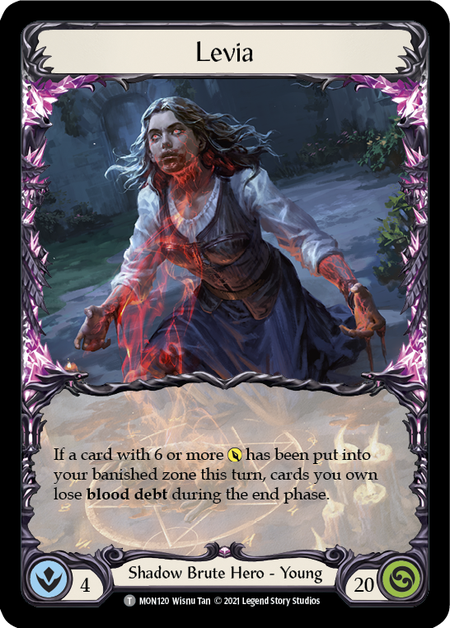
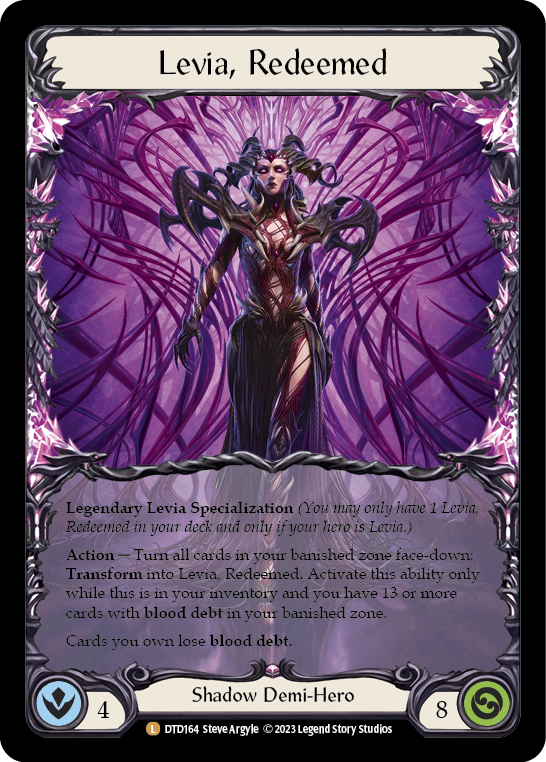
Whenever you assign a trait to a character, you narrow the width of that character’s appeal - but you may also strengthen the depth of their appeal. Through radical variation in tone and subject, LSS has attempted to court a host of different players to their game, giving a corner of their world to each of them (it’s a very ‘Marvel Universe’ approach to worldbuilding); while they’ve also been careful not to give a character an alienating trait just to be different. Divisive traits are only given when relevant; otherwise, they simply skirt around that portion of a hero’s presentation.
When Nuu debuts, we're likely to know a lot more about her sexuality than any hero that's come before, because her story and her archetype are inherently tied to how she engages in the fight. This could be considered an alienating trait for some portion of the player base, and may impact how she’s received; but LSS is choosing to put that aspect front and center, in a way they’ve not done with other heroes in the past. How does leading with these attributes actively help to sell the character?
The key comes in LSS’ ability to successfully sexualize her without objectifying her. Nuu’s hero art is infused with character, even as it leads with sex appeal. If they can maintain this objective, Nuu should stick the landing. And there’s no reason this shouldn’t be possible - in fact, it should be easier for them to successfully maintain character with sexuality on full display than acting violently. (Then again, their track record for violence hasn't shown much restraint.)
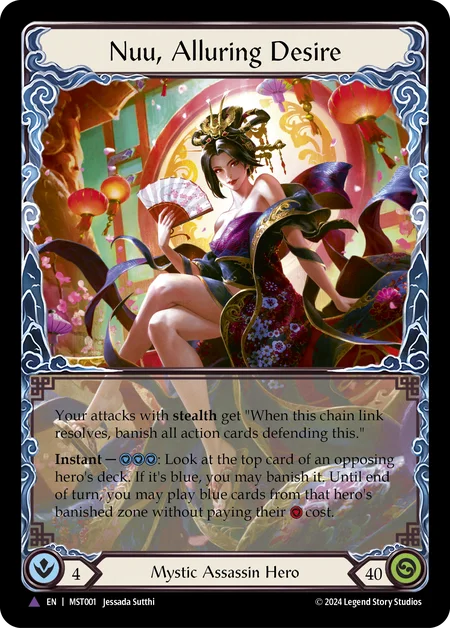
What does Nuu's card art tell you about her? She appears vulnerable, dressed in clothes that might not stay on if she stands up, much less throughout a fight. And yet she appears unconcerned, disinterested even. The art is actively working to develop agency here, to show Nuu as a character who is creating a sexual situation, not simply in one. She's smiling wryly, and while your attention is on her - looking up from a position of inferiority - hers is on something you can't see. Everything about this art is a distraction, until your eyes have met hers and you realize this is a trap, not a tryst.
Nuu is selling a strategy of deception - something Stealth cards can be made to provide and Assassin-stamped reactions deliver in spades - and a deck that appears weak while gaining power at the expense of the opposition. Will this, ultimately, prove to be the gameplay of the deck? And will players who resonate with this character find the gameplay equally resonant?
We talked earlier about Bravo as a sexualized hero, but it works because Bravo wants to be on display. Notably, Bravo is also one of the heroes with the most character-engaged fandoms. So too are Levia’s fans actively connected to her - essential to justifying a character whose core presentation alienates a portion of the player base. Nuu would do well to join these ranks, and the potential is truly there, if that’s the objective. I’d like to believe that LSS is aiming for such lofty ideals - they seem to care about the identity of their heroes. But to achieve that, Nuu needs to be sexualized because it expresses her character, not because her archetype excuses objectification.
I think Nuu - and the handling of the Assassin class altogether in Part the Mistveil - is about to put to the test LSS’ ability to handle sexuality in a mature fashion. To date, sex has been essentially absent from the narrative, and sexuality has been limited to performative representations of gender in the art. When Nuu overtly infuses Flesh and Blood with sexuality, will it come across as cheap marketing, pandering to an audience that expects a certain degree of fan service? Or will character remain at the center of Nuu’s presentation?



